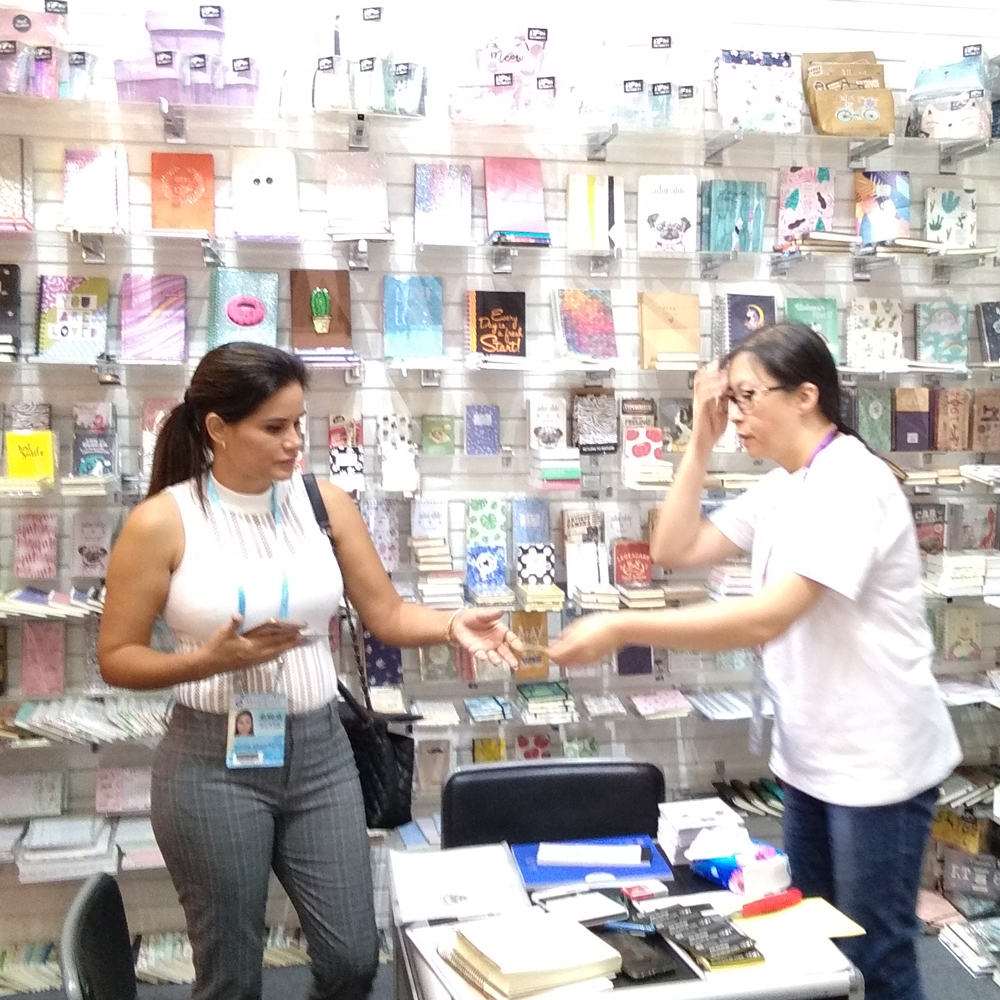The colorants used in inks are usually pigments or dyes. The majority of the pigments are hard, dense crystals that are difficult to grind into very fine particles without special methods. They are generally insoluble in water and ink binders and exist in suspension. Dyes are generally dissolved in water and binders. Most of the inks used are synthetic pigments, such as organic pigments, and do not use less or less natural pigments containing more impurities. In some developed countries, organic pigments used in printing inks account for approximately 50% to 60% of the total pigment output. Therefore, the printing industry is the main application field for organic pigments. New pigment formulations In order for organic pigment particles to be well-wetted and dispersed in oily or aqueous ink media, surface modification techniques must be applied to the organic pigment particles in order to impart higher lipophilic or hydrophilic properties to the pigment particles, achieving good compatibility with the ink media. match. To this end, it seeks to modify the surface of the paste or powdered pigment particles during the synthesis process, which is beneficial to both the ink producer and the user, both theoretically and practically. Microcapsule technology The development of new pigment formulations is to modify the surface of the pigment particles. The essence of this is to select the appropriate surface treatment agent to cover the surface of the pigment crystal and change its polarity to suit the needs of the ink dispersion system. The binder resin, solvents, additives, etc. are well matched. Microencapsulation treatment example In order to further understand the method of pigment microencapsulation, several examples of microcapsule modification treatment of pigment particles have been excerpted from relevant data. China's material storage and transportation Shenyang company Liu Yongqing Source "printing technology - ink special issue"
Not only can a wallet
collect money together with bank cards, credit cards and other monetary instruments in
a small bag, but it is also easy to carry around and use, and is usually the size of
your hand.In addition to these functions, the wallet can now be used as a carry-on
accessory or as a family photo folder.
We use the pigments whose performance meets specific requirements as the characteristics of the product. Its coloring power, transparency, fluidity, and dispersion are good, and it is a product for deep processing of pigments. In foreign countries, the ratio of organic pigments used in printing inks to commercial dosage forms is 1:20 or more, while in China it is only 1:1.5 or so. This shows that the performance, quality, and quality of imported inks are superior to domestic inks. In addition to some technical reasons, too few new dosage forms have been developed, and pigment dosage forms are also a major factor behind foreign countries.
1. Definition of microcapsules
There are five types of organic pigment surface modification treatment methods: surfactant treatment; pigment derivative treatment; grinding, acid dissolution, acid swelling and organic solvent treatment; polymer compound and inorganic compound treatment. This article only introduces the pigment particle microcapsule technology in the polymer compound processing method.
Microcapsule technology is a technology that uses a polymer film-forming material to coat solids, liquids, or gases to form fine particles. The resulting microparticles are called microcapsules. The microcapsules have a particle size of 1 to 100 μm, and microcapsules having a particle size of less than 1 μm are called nanocapsules. The substance encapsulated inside the microcapsules is called the capsule core; the microcapsule skin is a coating film formed of a film forming material called a wall material or an outer film, a coating film, and the wall material is usually a natural or synthetic polymer material. production. Depending on the nature and purpose of the capsule, one or more wall materials may be selected for coating. Since the formation of microcapsules, pigment particles have many unique properties, which has caused great interest in all walks of life, the scope of application has gradually expanded from the original drug-coated and carbonless copy paper to food, paint, ink, adhesive Agents, cosmetics, detergents, photographic materials and textile industries.
2. Preparation of microcapsules
The preparation methods of microcapsules can be roughly divided into three categories: chemical methods, physical methods, and physical and chemical methods, and they are mostly prepared by physical and chemical methods.
(1) Preparation method of aqueous phase separation
The phase separation process is also called agglomeration process. According to the different dispersion media, the cohesive phase separation method can be divided into aqueous phase separation and oil phase separation (or organic phase separation). The aqueous phase separation can be further divided into single condensation. Method and compound cohesion method.
a. Single aggregation: First, a gelatin (animal glue) aqueous solution having a concentration of 1% to 10% is prepared, and the temperature of the solution is maintained at 40 to 60° C. At this time, ethanol is added dropwise to the solution and stirred at any time to form two phases. In the system, the gelatin solution gradually becomes mixed and agglomeration occurs; when ethanol is continuously added, the gelatin will condense into a gel mass; if a certain core material (such as organic pigment particles) that is insoluble in water and insoluble in ethanol is added to the gelatin In the aqueous solution, gelatin encapsulates the capsule to form microcapsules.
b. Complex Coacervation: 1% gelatin aqueous solution and 1% gum arabic aqueous solution were mixed, and the solution was kept at 40°C after mixing. Then adjust with acetic acid solution. When the pH value of the mixture reaches 4.0, the viscosity of the mixture increases, stirring is laborious, and the solvent becomes more and more opaque. This is a typical condensation phenomenon. If the organic pigment particles, which are the core of the capsule, are added to the mixture prior to agglomeration and agitated so as to disperse well, the coating of the core material is also produced, so that the pigment microcapsules are prepared. This phenomenon of separation into two phases is reversible. If the pH of the solution is increased, the two phases will turn into one phase. The composition and quantity of the condensed phase are not only affected by the pH, temperature and concentration of the solution system, but also by the salt content in the solution system.
It can be seen from the above test that when the starting material for forming the outer capsule of the microcapsule is a water-soluble high molecular polymer, the condensed polymer phase is precipitated and separated from the aqueous solution to form an outer membrane of the microcapsule. It can be seen from the above that the production method of aqueous phase separation does not require special equipment, and the use of water as a medium is a commonly used method for microencapsulating solid or liquid particles that are insoluble in water. Among them, complex agglomeration is the phase separation caused by the neutralization of at least two oppositely charged colloids with each other; single agglomeration is the phase separation of a polymer caused by an aggregating agent such as ethanol.
(2) Preparation method of oil phase separation
Water-soluble solid or liquid capsules cannot be dispersed using water as a medium. Only organic solvents can be used to disperse them into water-in-oil emulsions, and then coated with oil-soluble wall materials to form microcapsules. Water-soluble polymeric wall materials account for only a minority, and most linear synthetic polymers are oil-soluble and serve as wall materials. In order to phase-separate the wall material dissolved in the organic solvent, it is necessary to add a non-solvent.
The so-called non-solvent is a solvent that dissolves organic solvents without dissolving the wall material and allowing the wall material to coagulate. The oil phase separation method can prepare water-soluble capsules and other capsule core capsules. However, it has obvious disadvantages in that it is difficult to completely remove organic solvents and non-solvents from the wall material to obtain a completely dried microcapsule product; in addition, a large amount of expensive organic solvents are also consumed, and most of the organic solvents are flammable and explosive. Security risks. At the same time, organic solvents are toxic and cause pollution to the environment, so the oil phase separation method is limited in its use.
1. Micro-encapsulation of CI Pigment Red 3
Take toluidine red (P, R, 3) as an example, use a high-molecular polymer, such as poly (N-vinyl)-2-pyrrolidone, to coat the toluidine red filter cake (water 200g, pigment 100g) with high The shear force device was dispersed in 1000 ml of an aqueous solution containing 37.9 g of the above polymer. A 17% sodium sulfate solution was added dropwise to the slurry while stirring, and the dropping rate was controlled, gradually decreasing from 10 ml/min to 2 ml/min. The film was then stirred for 20 minutes, and the microcapsule CI Pigment Red 3 had a content of 70.5% and the macromolecular compound was 29.5%. Then it was mixed with alkyd resin binder, 150 parts cake (48% solids content) and 200 parts of mineral oil, heated to 50°C, and added a small amount of Turkish red oil to drive off residual water under vacuum, using alkyd resin, The mineral solvent and xylene were diluted to a pigment content of 22%. This product has a higher gloss than the paint prepared in the same binder.
2. Pigment particle microcapsule treatment process
Using organic pigment particles as the capsule core, different types of capsule wall materials may be used, such as natural colloids (Gum Arabic, gelatin, etc.), synthetic polymer compounds, and pre-dispersed particles may be coated by different coating processes to prepare Microencapsulated pigment products. The microcapsules can modify the particles, improve the compatibility with the media, increase the gloss and dispersibility, improve the light resistance and weather resistance, and have a dust-proof effect.
The phase separation coating process is as follows:
Practice has proved that the microencapsulation of pigments can significantly change the surface polarity of pigment particles, the fluidity of the ink and the stability of the dispersion system, and the heat resistance, light resistance, and anti-diffusion performance are significantly improved compared to the pigments without microcapsules. For example, precipitation polymerization is performed at a ratio of 4:1 between CuPc and acrylic acid, and the resulting microencapsulated product has bright color, strong coloring power, and strong deflocculation resistance. Another example is phthalocyanine pigment is a bright color material, but the light resistance, corrosion resistance is poor, after the formation of microcapsules, its performance can be significantly improved.
In short, microencapsulation can improve product performance, expand application areas, and achieve greater economic benefits. It can be assumed that microencapsulation is the development direction of product refinement and functionalization. 


PU Wallet,TPU Wallet,Travel Wallet,Credit Card Wallet,Luminous PU Wallet,Long Wallet.
Jilin Y.F. Import & Export Co.,Ltd , https://www.jlpencilcase.com